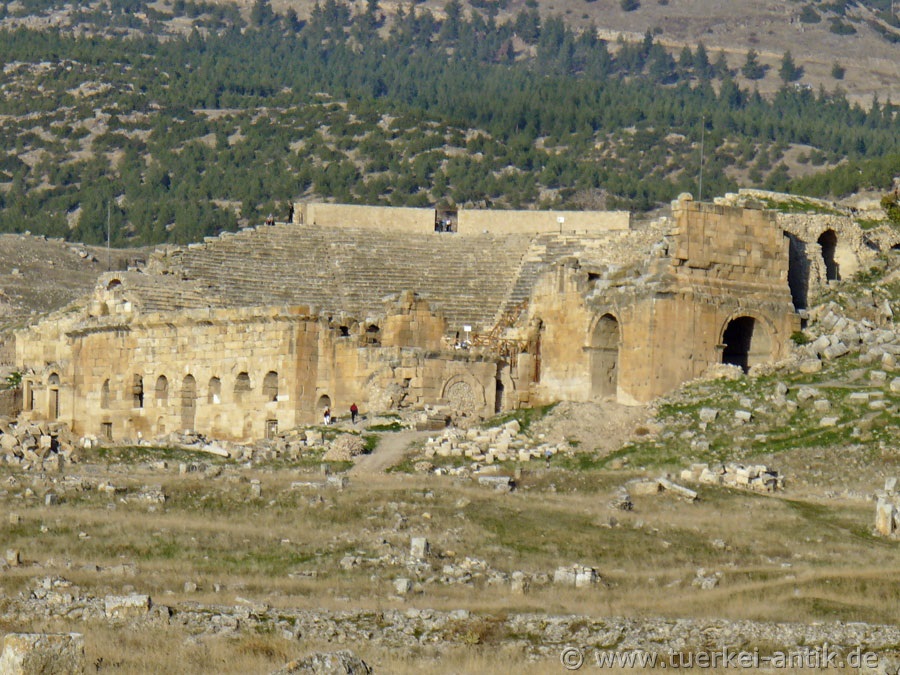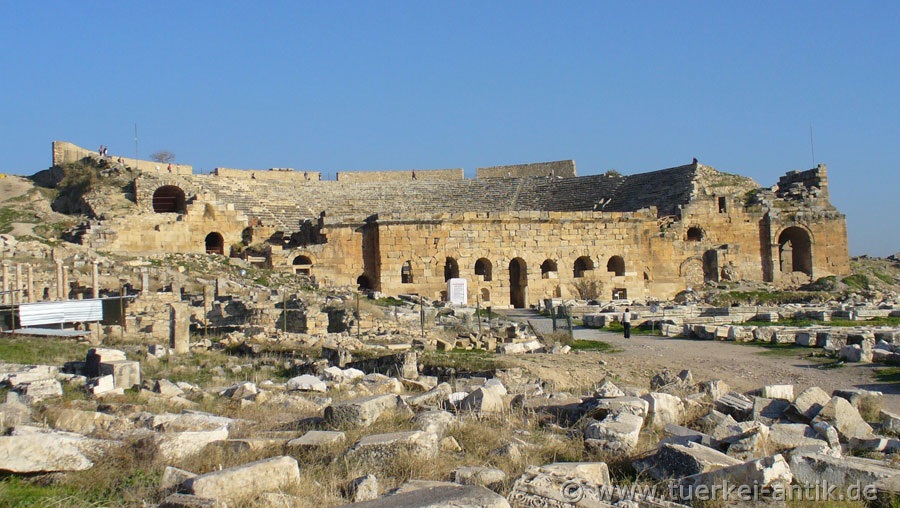 |
|
Ancient Theater in Turkey Hierapolis |
||||||||||||
|
|
|
|||||||||||
|
||||||||||||
|
The Roman theatre of Hierapolis, built after a devastating earthquake in 60 AD, replaced the much older Hellenistic theatre from the 2nd century BC, which was almost completely demolished for the construction of the new theatre. In the course of time, the theatre underwent several restorations and minor extensions. On the occasion of Emperor Hadrian's visit to Hierapolis in 129 AD, the stage house underwent extensive extensions. In the 4th century AD, under the Eastern Roman Emperor Constantius II († 3 November 361), the orchestra was rebuilt for animal fights and water games. The lowest (first) tier consists of 20 rows of seats. Above the gallery there are 25 rows of seats in the 2nd tier. On the central axis of the first tier there is a prominent box reserved for the emperor and his closest followers. |
||||||||||||
| Die Geschichte von Hierapolis: | ||||||||||||
|
Hierapolis was an ancient Greek city on the road from Sardeis (or Sardes) to Apameia. The town was already famous in ancient times for its warm springs, the water of which creates white calcareous sinter terraces during evaporation. The water was used to dye wool. Weaving and textile trade formed the basis of the city's wealth. Even the Romans came to Hierapolis to relax in the thermal springs, to recover or to cure various ailments. The centre of this spa town, which flourished during the Roman Empire, was the thermal baths and the temple district. A huge complex of baths still testifies to the popularity of the 30-50 °C hot spas today. Even if the city, as a presumably old Kybelekult shows, probably already existed earlier, the oldest evidence comes from the 3rd century B.C. Hierapolis was founded by Antiochos II (286 to 246 B.C.), just like the neighbouring city Laodikeia at Lykos. The older traces of settlement are covered by travertine layers. The city was destroyed by earthquakes in 17 AD, but was rebuilt in an expanded form afterwards. In the first and second century thermal baths, fountains, theatres and temples were built. The numerous sarcophagi and graves in the city's necropolises also date from this period. |
||||||||||||
 |
||||||||||||
 |
||||||||||||
|
|
||||||||||||
|
|
||||||||||||
|
|
||||||||||||
|
|
||||||||||||
|
|
||||||||||||
|
|
||||||||||||
| Photos: @chim, Monika P. | ||||||||||||
| Translation aid: www.DeepL.com/Translator | ||||||||||||
| Source: Wikipedia and others | ||||||||||||
|
|
||||||||||||

